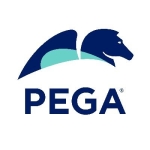What is our primary use case?
We position Oracle BPM Suite as central process implementation and documentation platform, where the automation part is the more important one. With process automation media breaches can be avoided, business become more agile as well as transparent and existing process can become more efficiently.
How has it helped my organization?
The tool gives us capabilities to significantly increase the transparency regarding business processes and their corresponding executions.
In addition, Oracle BPM Suite allows Business and IT teams to talk about the same things, the business processes, and allows collaboration to document, implement, and optimize the corresponding models.
What is most valuable?
One of the most valuable features of the solution is the capability to allow the implementation of static processes, using the standard BPMN 2.0 notation, and also to address not straightforward, dynamic process scenarios, by providing features for Case Management (Adaptive Case Management, ACM).
To increase the transparency of the execution models to the overall business processes, BPM Suite provides capabilities to document and model the corresponding high-level business processes (Enterprise Map and Value Chains) and the definition of respective KPIs. This can be done using a lightweight, browser-based tool (BPM Composer). With this, it is basically possible to keep and visualize the big picture, which is often missing when doing BPM projects.
In addition, the platform comes with a very solid foundation, which also allows for the implementation of consistent integrated service base.
The capabilities for building consistent integrative solutions, coming with a broad spectrum of connectivity adapters to integrate with third party enterprise information systems, is key for building flexible BPM applications.
What needs improvement?
Support for Decision Modelling Notation (DMN). There is a Business Rule Engine available, but this is not DMN-compatible.
For how long have I used the solution?
More than five years.
What do I think about the stability of the solution?
What do I think about the scalability of the solution?
How are customer service and technical support?
The level of technical support is satisfactory. It depends highly on the affected components and on the way the error can be described, and on what information can be provided.
There is also a lot of documentation available. The development community is also responsive and provides a lot of information in the form of blog posts, webcasts, and presentations.
Which solution did I use previously and why did I switch?
How was the initial setup?
How complex the initial setup is depends on the requirements.
If you need a highly available, clustered solution (Multiple Nodes), then it's more complex than only creating a single node instance.
If you do it for the first time, it seems to be very complex, but there's documentation available (Enterprise Deployment Guide), which describes the needed setup steps on a very detailed level.
What's my experience with pricing, setup cost, and licensing?
It is necessary to evaluate the requirements regarding platform usage and the main operation area of the platform. A topology blueprint should be created and validated against the following questions:
- How many instances do you expect per day/month/year?
- What is the average amount of data?
- Should the environment have High Availability?
- What kind of integrations/processes will you have - stateless or stateful, long running processes derived from the requirements, and evaluated at the very beginning?
Depending on that, the sizing for the environments should be done.
Which other solutions did I evaluate?
What other advice do I have?
Collecting requirements and being clear what is needed is key to creating a scalable, robust, and future-oriented environment.
Oracle BPM Suite can be used to automate parts of a company's business processes to increase operational efficiency. In addition, the high-level business processes and KPIs, which are important for specific processes, can be documented. But, without a clear, integrated service architecture, BPM cannot be implemented successfully. You have to think about your processes, on the one hand, and on the needed functionalities provided as Services, based on data from the backend systems.
To ensure robustness and easy changeability of the developed services and components, my recommendation is to set up a Continuous Integration (CI) environment as a first step in every project.
The CI environment is the central platform for automated test executions as well as for deployment automation and is needed to ensure development efficiency and agility with respect to changes in existing components.
As a last point, I would like to mention that BPM Suite needs a proper operation concept. It is essential to maintain the platform. You should also think of retention times for the runtime data and which information needs to be kept, e.g., to comply with legal regulations.
Disclosure: My company has a business relationship with this vendor other than being a customer.
















Thanks for your comments Dan.
LDAP is working now and we migrated to the versión 12.2.1 that is a Little more stable than 12C.
Talking about the comments, we talked a lot with Oracle, but they told us that passing comment between subprocesses wasn't a feature included and if we wanted that we had to request for that functionality. We had to make a development to do that. If you have an article about the trick you mentioned it would be great.
Thanks again.